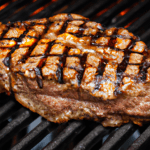Introduction
Stainless steel is a popular material known for its durability and resistance to corrosion. Many people wonder how long stainless steel can last when exposed to outdoor elements. In this ultimate guide, we will explore the factors that affect the lifespan of stainless steel outdoors and provide you with valuable insights.
Factors Affecting the Lifespan of Stainless Steel
Several factors play a crucial role in determining how long stainless steel can last outside. Understanding these factors will help you make informed decisions when using stainless steel in outdoor applications.
1. Grade of Stainless Steel
The grade of stainless steel used is a significant factor in determining its outdoor lifespan. Different grades offer varying levels of corrosion resistance. For example, marine-grade stainless steel (such as 316 stainless steel) is highly resistant to corrosion and is ideal for coastal or high-humidity environments. On the other hand, lower-grade stainless steel may corrode more quickly when exposed to outdoor elements.
2. Environmental Conditions
The environmental conditions in which stainless steel is installed greatly impact its longevity. Factors such as temperature, humidity, saltwater exposure, and air pollution can accelerate corrosion. Stainless steel exposed to harsher conditions may require more frequent maintenance and cleaning to ensure its longevity.
3. Maintenance and Cleaning
Regular maintenance and cleaning are essential to prolong the lifespan of stainless steel outdoors. Removing dirt, debris, and contaminants from the surface of stainless steel will prevent corrosion and maintain its appearance. It is recommended to clean stainless steel surfaces with mild soap and water or specialized stainless steel cleaners.
4. Protective Coatings
Applying protective coatings to stainless steel can enhance its resistance to corrosion and extend its lifespan. Coatings such as paint, powder coating, or specialized anti-corrosion coatings create a barrier between the stainless steel surface and the outdoor elements. These coatings should be applied according to the manufacturer’s instructions and periodically inspected for any signs of damage.
5. Design and Installation
Proper design and installation of stainless steel structures or components are crucial for their longevity. Adequate drainage, avoiding crevices or traps where moisture can accumulate, and ensuring proper ventilation are essential considerations. Additionally, using stainless steel fasteners and fittings compatible with the grade of stainless steel being used will prevent galvanic corrosion.
Conclusion
In conclusion, the lifespan of stainless steel outdoors depends on various factors, including the grade of stainless steel, environmental conditions, maintenance, protective coatings, and proper design and installation. By considering these factors and taking appropriate measures, stainless steel can last for many years outside. Regular maintenance and periodic inspections are key to ensuring its longevity. So, if you are planning to use stainless steel in outdoor applications, make sure to choose the right grade, maintain it properly, and protect it from harsh environmental conditions.




